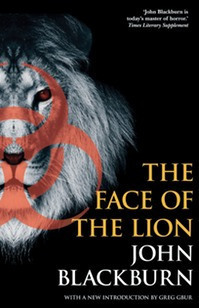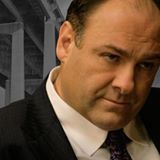Brian Keene's Blog, page 137
June 29, 2013
Week in Review 6-29-13

The big news this week was, of course, the passing of Richard Matheson, a giant in the field and an inspiration to three generations of writers.
In happier news, there’s a new charity horror convention taking place next year. The movie version of my novel THE CAGE has added Emmy-nominated (Boardwalk Empire) FX artist Jeremy Selenfriend to the production. And I posted an essay about the writing of EARTHWORM GODS.
Finally, we caught up with author Tim Lebbon and artist Brian Boucher.
June 28, 2013
Lebbon and Barsoom: Friday Plugs
 My dear friend and fellow author Tim Lebbon is doing another Ironman competition. He’ll swim 2.4 miles, race a bike 112 miles, and then run a full 26.2 marathon — all in less than a day — to raise money for St David’s Hospice Care, a cause that is very personal to him. You can contribute to Tim’s fundraiser or learn more about the cause and the competition by clicking here.
My dear friend and fellow author Tim Lebbon is doing another Ironman competition. He’ll swim 2.4 miles, race a bike 112 miles, and then run a full 26.2 marathon — all in less than a day — to raise money for St David’s Hospice Care, a cause that is very personal to him. You can contribute to Tim’s fundraiser or learn more about the cause and the competition by clicking here.
 Meanwhile, if you are an author, editor, or publisher looking for professional design work (especially if you’ve self-published) my friend Brian Boucher of Barsoom Design (and known to occult detectives such as myself as Simon Drax) is currently accepting new clients. You can view his portfolio, see many samples of his cover designs, and contact him by clicking here.
Meanwhile, if you are an author, editor, or publisher looking for professional design work (especially if you’ve self-published) my friend Brian Boucher of Barsoom Design (and known to occult detectives such as myself as Simon Drax) is currently accepting new clients. You can view his portfolio, see many samples of his cover designs, and contact him by clicking here.
June 27, 2013
Something Better Than KeeneCon This Way Comes…
For the last decade, long-time readers have heard me talk about one day hosting a ‘KeeneCon’ — a convention for you, the readers, where I’d sign your books and we’d all hang out and there would be other authors on hand whose work you could learn about, and movies, and games, and other fun stuff. I’d always envisioned it as a cross between a horror convention and An Evening with Kevin Smith.
Last year, I decided that KeeneCon would indeed be held in 2014. We launched an official Twitter page, and behind the scenes, I lined up a hotel and a few celebrity guests. But then the Scares That Care charity asked me to be involved with their 2014 convention. Scares That Care helps families of children with things like cerebral palsy, leukemia, neuroblastoma, burns, and other maladies. Anyone who’s even a casual reader of this Blog or my Twitter feed knows that I am actively and vocally involved in two causes above all others — children and veterans. Needless to say, Scares That Care’s mission is one that resonates with me, and I’m proud to be involved with them. (It also helps that I’m long-time friends with several of the board members, and I trust them implicitly).
Anyway, I’ll be running the Author Programming at their 2014 Scares That Care Weekend convention, which will be held next year, June 27 – 29 in Williamsburg, Virginia. And that’s why I’m not doing KeeneCon next year. I’d much rather you guys come to this convention instead of KeeneCon, because this is a much more important cause. All of the convention’s proceeds will go to the families that need assistance. Scares That Care is an organization that has no salaries, and no paychecks. I’ve lined up some incredible authors to sign for you and answer your questions (and yes, I’ll be signing and chatting with you, as well). There’s also an amazing array of actors, actresses, and other celebrity guests lined up (the majority of which have not been announced). Watch for those announcements, as well as announcements for when tickets go on sale, on the convention website.
Until then, please make vacation arrangements now for June 27-29, 2014. Because, quite simply, this is going to be the greatest horror convention ever, and if you miss it, you’ll kick yourself later on.
And if you’re still not convinced, watch this 6-minute tour of the hotel, guest-starring me (and it’s even got a Marvel movie-style Easter egg after the final credits).
See you there!
June 25, 2013
MOVIE NEWS
* THE CAGE has added Emmy-nominated (Boardwalk Empire) FX artist Jeremy Selenfriend (a.k.a. Monster In My Closet Studio) to the production. In addition to Boardwalk Empire, Jeremy’s work has graced such films as Amazing Spider-Man 2, Men In Black 3, and Chernobyl Diaries. Don’t forget to follow the movie’s official Twitter account. If you haven’t yet read the book, it’s available in paperback, Kindle, and Nook.
* DARK HOLLOW missed the window to get all our financing in place and be shooting in Canada in August, so we’re now trying to restructure everything and shoot in New Zealand around Jan-March 2014, and then do post-production in Toronto. Which is okay, since most of our crew were finishing up working on The Hobbit: The Desolation of Smaug. Don’t forget to like the movie’s official Facebook page. If you haven’t yet read the book, it’s available in paperback, Kindle, and Nook.
* FAST ZOMBIES SUCK is… well, none of us really know. Suffice to say the group agrees that we all need to work on our communication with each other and finish these post-production items. If you haven’t yet read the book, it’s available on Kindle, Nook, and Kobo as part of Blood On The Page.
* CASTAWAYS, DARKNESS ON THE EDGE OF TOWN, and THE SIQQUSIM WHO STOLE CHRISTMAS are still under option.
* GHOUL, SUBURBAN HOLOCAUST, and THE TIES THAT BIND are all on DVD. Click here for info on each.
June 24, 2013
Richard Matheson R.I.P.
Richard Matheson has passed away after struggling with a lengthy illness. He was 87. It’s tempting to just fade this website to black for a week in memoriam, but it occurs to me that fully half my audience are in their teens or twenties, and might not be fully aware of the magnitude of this loss. So, for those people…
Richard Matheson was perhaps best known for the post-apocalyptic novel I Am Legend, which has been adapted for film several times (but none of those films have ever truly captured the spirit of the book). While it is George Romero who is credited with creating the modern zombie, it was Matheson’s I Am Legend which provided Romero the seeds. But Matheson didn’t just help invent the modern zombie. He (along with peers such as Robert Bloch) ushered in modern horror fiction. A Stir of Echoes, Hell House, The Incredible Shrinking Man, classic episodes of The Twilight Zone, Star Trek, and Night Gallery, dozens of novels, short story collections, and screenplays (including the oft-forgotten Jaws 3), and a major influence on an entire generation of horror, dark fantasy, crime, and science fiction authors, editors, and screenwriters, including Stephen King, Anne Rice, Richard Laymon, Ellen Datlow, John Carpenter, and literally hundreds of others.
It’s also important to note that he was a father, husband, veteran of World War 2, and a friend to many.
To say he will be missed is like saying that the moon is round — it’s a true statement, but one that doesn’t even begin to truly describe it. Perhaps a more fitting statement is…
He was legend.
Rest In Peace…
EARTHWORM GODS – A History Lesson
 Note: The following is an edited version of the Afterword that appears in the new Deadite Press edition of
Earthworm Gods
, on sale now in paperback, Kindle, and Nook.
Note: The following is an edited version of the Afterword that appears in the new Deadite Press edition of
Earthworm Gods
, on sale now in paperback, Kindle, and Nook.
Earthworm Gods is a special book for me. If you’d like to know more about how the book was written or what it means to me, read on.
Earthworm Gods was the sixth book of mine to see print. Published in hardcover in 2005, it followed three novels and two short story collections, all of which were early, junior efforts — the works of a writer still learning his craft and finding his voice. It wasn’t until Earthworm Gods that I really started to do that, and as such, I’ve always had a soft spot for it.
But that’s not the only reason the book has always been one of my personal favorites. I also have a soft spot for the character of Teddy Garnett, because Teddy was, in fact, my grandfather, Ward Crowley.
I’m a firm believer that everything an author writes is, to some extent, autobiographical. As writers, we mine our lives and experiences for fiction, and everything can be fodder for the muse. Sometimes, this might be something as simple as a memory of your first kiss — or first heartbreak. Other times, it might be something much bigger. There is an element of me in everything I write. Usually, it is something quite small — a Philadelphia row home glimpsed from a car window inspiring Urban Gothic or my musings about religion during a long commute home from Baltimore to Pennsylvania serving as the impetus for Take the Long Way Home. A few times, as in the case of Ghoul and Dark Hollow, those autobiographical flourishes have gone well beyond the boundaries of subtlety.
Earthworm Gods was autobiographical in a different way. Teddy was, as I said, based on my grandfather. They shared the same political and religious views, the same daily routine, the same mannerisms and voice. The account of how Teddy met Rose and the courtship and marriage that followed was ninety-eight percent that of my grandparents. And Teddy’s sphere of influence is that of my grandfather’s, as well. The town of Punkin’ Center is an almost exact replica of where they lived in real life. Even Teddy’s home is drawn from reality. The character of Carl shares a number of similar traits as that of my grandfather’s best friend, Billy.
My grandfather passed away several years ago. His friend passed a few years before that. The house still stands, but it is worn, and the town is slowly changing. It may not be noticeable to those who live there year round, but I see the small changes every time I visit. The way things once were exist now only in the memories of those who knew them — and in this book. Over the years, readers have often commented on how realistic Teddy and Carl seem to be. Now you know why. I knew these men, and admired and loved them, and wanted you to know and admire and love them, too.
Readers have also commented often on Teddy’s battle with nicotine withdrawal, and how realistic that seemed. In this instance, that’s not my grandfather speaking, but my own experiences battling nicotine (an addiction I have struggled with off and on for all of my adult life).
One final autobiographical note. In the novel’s second act, Kevin mourns the loss of his friend (whom the reader only gets to know as a severed head). When I wrote that, I was dealing with the loss of a friend, as well, and I channeled a lot of those emotions into Kevin’s perspective. In truth, I’d mostly forgotten about that until I was re-reading the novel in preparation for writing this afterword — and then it all came rushing back to me, just like picking the scab off a wound you thought healed, only to be surprised when it bleeds.
Speaking of the book’s second act, I’d like to take this opportunity to clarify this novel’s history and structure, both of which have been discussed on the internet at length — and often erroneously — since its initial publication.
Earthworm Gods started out as a short story. I wrote that story in 1999. It’s inspiration was simple. I was living, at the time, in Lancaster, New York — a blue collar suburb near Buffalo — and working a day job for a collection agency. Because my girlfriend and I only had one car, I walked to work each morning along two miles of railroad tracks and industrial lots that were nearly post-apocalyptic in their bleakness. One of those morning walks took place after a heavy thunderstorm and some severe flooding. I noticed how many earthworms had been thrust topside from the flooded ground, and wondered what else would come to the surface if the entire world were flooded. From that idea, I wrote a short story called “Earthworm Gods”. I based the main characters on my grandfather and his friend, because at the time, I wanted to have a protagonist that wasn’t a thirty-something action hero.
“Earthworm Gods” (the short story) was the first work of mine to truly garner any sort of mainstream attention, and early readers asked for more set in that “world”, so I wrote a follow up. That second story “The Garden Where My Rain Grows” was a short novella set in the flooded remains of Baltimore, and concerned a group of people living in the top floors of a hotel, and fighting against a local cult and an entity known as Leviathan. Once again, fan response was overwhelmingly positive, and people asked for a full length novel.
So I wrote one.
Some critics have erroneously supposed that this novel, Earthworm Gods, is nothing more than those two shorter stories — “Earthworm Gods” and “The Garden Where My Rain Grows” — mashed together into book form. This is not only wrong, but incredibly frustrating to me as a writer. If put together, the total word count for the stories is only 30,000 words. The word count for the novel is well over 80,000 words. Obviously, there’s a lot more to the book than just two stories haphazardly linked together. What I did was start with those two stories as a base, using them as the outline of the novel. A sort of skeleton, if you will. I then built upon and expanded the story and characters. I purposely modeled the novel after War of the Worlds by H.G. Wells, one of my favorite novels of all-time. In fact, I even had Teddy reference this at the beginning of the book’s third act. War of the Worlds is broken into three parts — the account of the narrator, the account of the narrator’s brother, and then the second account of the narrator. Earthworm Gods followed this same method, going from Teddy’s tale, to Kevin’s, and then back to Teddy again. It’s worth noting that I repeated this structure for the sequel, Earthworm Gods II: Deluge.
The hardcover was published in 2005, earning some critical acclaim and a quick sell-out for the publisher, Delirium Books. This made me happy. Then Dorchester, who were publishing mass-market paperback editions of my work at the time, elected to publish it as my third book with them. And that was where my happiness faltered.
The first thing they did was change the title. You might think that authors have control over things like the titles of their books and the art that goes on the cover, but they don’t (or at least, they didn’t back then. The advent of self-publishing technology has changed this in no small measure). Dorchester’s marketing department (because in big-time publishing, the author, editor, and everyone else are really beholden to the marketing department, who secretly wield all the real power), vetoed the title Earthworm Gods. It didn’t matter to them that the book had already been published in hardcover under that title, and that all of the good reviews mentioned that title, and that when the book came out in paperback, people who had read those reviews would be looking for that title. No! According to the brain-trust in Dorchester’s marketing department, Earthworm Gods would confuse readers. The title wasn’t specific enough. It could be a treatise on gardening just as easily as a horror novel (and yes, that’s a direct quote from one of the meetings we had over this). Ultimately, they decided to change the title to The Conqueror Worms, which caused my dear friend and fellow author, Tim Lebbon, to ask me if Poe knew that I was raping his corpse.
Then came the cover. I won’t describe it in detail here because chances are, you’ve already seen it. If not, Google the image. Earthworms suspended over what appears to be an HO-scale model train town, and not a drop of fucking rain in the sky.
Suffice to say, that cover made me weep blood.
And that is why I’m so very pleased and honored that Deadite Press is making Earthworm Gods available again. Text-wise, the changes are only superficial. Typos that crept into the previous published versions have (hopefully) been fixed for this edition. One brief scene, in which Kevin and the others confront a victim infected with the white fuzz, was cut from the earlier editions but has been included for this one. I cut it originally because I thought it slowed the pace down, but decided to include it here. I’m very happy that the novel once again carries my preferred title, and that this time, it has an awesome cover by Alan M. Clark, whose work I’ve been lucky enough to have gracing my covers for most of my career.
Brian Keene
May 2012
June 23, 2013
Week in Review 6-23-13
 Spent the weekend in Virginia working with the Scares That Care charity crew. We even filmed a commercial for their convention in which I play myself, sitting in a bar. Pretty easy character to play. You’ll see it soon.
Spent the weekend in Virginia working with the Scares That Care charity crew. We even filmed a commercial for their convention in which I play myself, sitting in a bar. Pretty easy character to play. You’ll see it soon.
Issue #2 of THE LAST ZOMBIE: THE END hit stores this week. If your local comic shop doesn’t carry it, buy it online here. I posted a new video explaining book terminology and a new essay about a special lady. We also took a look at James Blackburn’s classic zombie novel, THE FACE OF THE LION, and remembered James Gandolfini, who played my totem fictional character.
June 21, 2013
The Face of the Lion
 John Blackburn’s 1976 zombie novel, The Face of the Lion, doesn’t actually have the word zombies in it. But that’s what it is — a bridge between Romero’s Night of the Living Dead and later works such as Simon Clark’s masterful Blood Crazy. This new edition contains an introduction by UNC associate professor of physics Greg Gbur, who discusses this at length (and gives me a special little shout-out, as well).
John Blackburn’s 1976 zombie novel, The Face of the Lion, doesn’t actually have the word zombies in it. But that’s what it is — a bridge between Romero’s Night of the Living Dead and later works such as Simon Clark’s masterful Blood Crazy. This new edition contains an introduction by UNC associate professor of physics Greg Gbur, who discusses this at length (and gives me a special little shout-out, as well).
You’ll remember my essay called “Roots”, about books all horror readers and aspiring horror writers should know. This is one of those books. If you haven’t read it, you should. Click here to buy the paperback.
June 19, 2013
James Gandolfini RIP
 It’s no secret that I feel an affinity for Tony Soprano more than any other fictional character ever. My closest friends and peers agree on that, as well. I know this because in the first five minutes after news of his death broke this evening, I received 16 texts from them asking if I’d heard. My friends understand that I identify with Tony because, behind the scenes, in many ways, I am Tony. Replace “mob” with “publishing” and “Italian” with “Irish” and there are countless times that character’s personal struggles mirrored my own. And yes, I know how fucked up it is to identify that closely with a sociopath mob boss who constantly questions his identity and purpose. My therapist and I have discussed it many times. And I’ll tell you what I told her. Part of it was great writing. But another part was what James Gandolfini put into the role. Rest In Peace…
It’s no secret that I feel an affinity for Tony Soprano more than any other fictional character ever. My closest friends and peers agree on that, as well. I know this because in the first five minutes after news of his death broke this evening, I received 16 texts from them asking if I’d heard. My friends understand that I identify with Tony because, behind the scenes, in many ways, I am Tony. Replace “mob” with “publishing” and “Italian” with “Irish” and there are countless times that character’s personal struggles mirrored my own. And yes, I know how fucked up it is to identify that closely with a sociopath mob boss who constantly questions his identity and purpose. My therapist and I have discussed it many times. And I’ll tell you what I told her. Part of it was great writing. But another part was what James Gandolfini put into the role. Rest In Peace…
THE LAST ZOMBIE: THE END #2 On Sale Now

THE LAST ZOMBIE: THE END #2 is on sale today in all good comic book shops. If your local shop doesn’t carry it, you can buy online HERE.
The final chapter continues! In the ruins of Chicago, the hunted becomes the hunter as Planters struggles to stay alive and free his teammates from their captors. Meanwhile, Ian’s battle with the zombie virus takes an unexpected turn — one that will put the rest of the team and their entire mission at risk.



